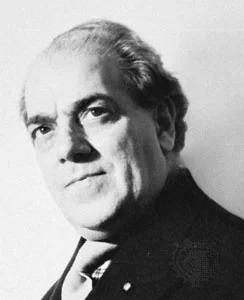Short Answer: Both are related to musicians with the surname of Villalobos. Bernardo Villalobos (Eugenio Derbez) is a music teacher in the Best Picture nominee CODA and Heitor Villa-Lobos composed the Bachianas Brasileiras.


Sorry for the long hiatus, I’ve matched at Wills Eye Hospital, eaten lots of fantastic BBQ in Texas, and taken up rock climbing in the interim.
I heard a segment on The Intelligence a few days ago about Brazilian modernism that was highly related to my most recent blog post about Tarsilo do Amaral, Antropofagia, and modernism in Brazilian art. In brief, the podcast/article traces the course of Brazilian modernism in the century since the Modern Art Week (an arts festival to Brazilians “as important as the…Armory Show”) – discussing the Antropofagia movement, the architecture of Oscar Niemeyer, and the evolution of bossa nova. Of greatest interest to this post, it notes that Heitor Villa-Lobos presented some of his works at the Modern Art Week as well.
As a young man, Heitor Villa-Lobos (1887-1959) rebelled against his mother’s desire for him to become a doctor. He instead become a “musical vagabond” that played guitar and cello to support himself while traveling around Brazil. During this period, he absorbed Brazilian folk music, especially the Afro-Brazilian music of the country’s north. After his travels, he enrolled in the National Institute of Music in Rio de Janeiro where he seriously studied classical stalwarts such as Bach, Wagner, and Puccini. Among an extraordinarily prolific output (with ~2,000 credited works), his Bachianas Brasileiras (1930-1945) are probably some of the best known. These works uniquely blended Western classical music with Brazilian folk and popular music.
I’ve heard Bachianas Brasileiras No. 5 live twice in my life – once with Nicole Cabell and the Boston Symphony Orchestra in 2014- and the other time at a concert with a Stanford professor that refused to extend my funding for a research project. In any case, it’s quite sublime. For a recording helmed by Villa-Lobos himself:
CODA (child of deaf adults) is a coming-of-age comedy-drama directed by Sian Heder that is a remake of the 2014 French film La Famille Belier. Ruby (Emilia Jones), the only hearing member of her family, struggles to balance her passion for singing with her responsibilities to her family’s fishing business. The cast is rounded out by her inspirational music teacher Mr. Villalobos (Eugenio Derbez) and family (Troy Kotusr, Daniel Durant, and Marlee Matlin). It’s up for three Oscars (including Best Picture) in 2022. I would definitely recommend streaming on Apple TV or seeing it in theaters (for free!). You’ll never hear Judy Collins’ “Both Sides Now” the same after watching…

Not totally related, but I also watched Soderbergh’s Kimi the other day in which Billie Eilish’s ‘Oxytocin’ was featured multiple times. Since then, another song from Happier Than Ever, Billie Bossa Nova has been totally stuck in my head. For some real bossa nova, I had a radio show from a few years ago also attempting to explore the evolution of Brazilian music here: